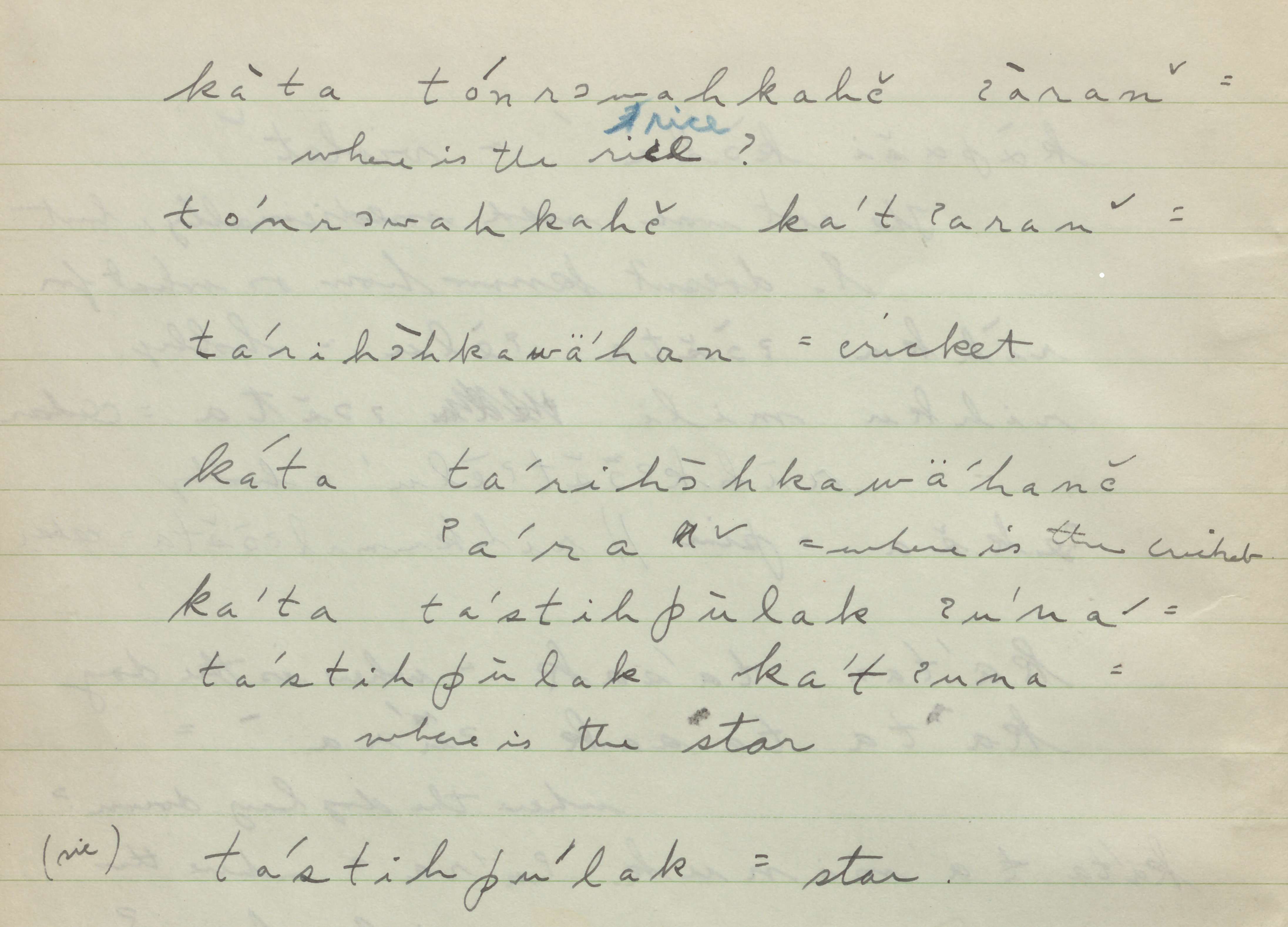Spatial Orientation in Tunica Grammar
by Patricia Anderson
Sitting, standing and lying down: those are the three positions any noun can take in the Tunica language. Some nouns are inherently one position: rivers always lie; trees generally stand. It is possible for a tree to lay after it is felled. But under no circumstances of Tunica grammar could a tree sit.
Spatial orientation shows up grammatically in the use of existentials, English equivalents of “there is” or “there are.” The verbs to denote existentials inherently encode sitting, standing or lying. For example, “there is a tree” uses the verb kal’ura since it is standing whereas “there is a snake” uses the verb ura since it is lying. Certain animals inherently squat, such as ducks; stating that these nouns exist uses the verb una.
Rihku kal’ura
tree there is (standing)
There is a tree
Nara ura
Snake there is (lying)
There is a snake
Kuwa una
duck there is (sitting)
There is a duck
Position in space is also expressed grammatically when creating durative constructions. Durative constructions in Tunica are often translated as progressive verbs in English. “He is sleeping” is inflected with a form of ura, since you most often sleep lying down. Whereas “he is sitting” is inflected with a form of una, since you always sit in a sitting position.
Rap’ura
rapu-ura
sleep-durative
He is sleeping
Uk’una
uki-una
sit-durative
He is sitting
If you’d like to provide additional information, you can indicate that someone is doing something in different positions based on the verb you use to inflect. See the below example for the difference.
Har’ura
hara-ura
sing-durative
He is singing (in a lying position)
Har’una
hara-una
sing-durative
He is singing (in a sitting position)
During her work with Youchigant, Haas became aware of this distinction in Tunica grammar. She specifically set up elicitation paradigms to illuminate this grammatical feature; and in later notebooks, Haas was sure to ask about activities in a variety of positions in order to see if there were any grammatical nuances she should be aware of.
This example from Notebook 14 shows the different position used when asking where something is; ara is the feminine singular form of ura.

When asking where “rice” is, you use the verb that denotes a lying position, whereas when you ask where the “star” is, you use the verb that denotes a sitting position.
As you can see above with the feminine ara and the masculine una, spatial orientation is intertwined with grammatical gender and animacy class. For more on these topics, see Tunica Animacy.
